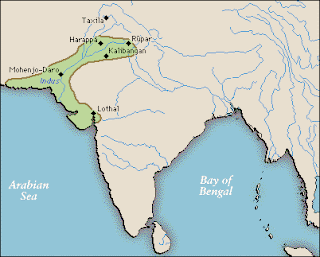he human species multiplied after agriculture increased the supply of food.after food increased, the population increased to about 5 million from 4 million. the concentration of large numbers of people in villages encouraged specialization of labor. most people in neolithic villages cultivated crops or kept animals. but a surplus of food enabled some individuals to concentrate their time and talents on enterprises that had nothing to do with the production of food. the rapid development of specialized labor is apparent from excavations carried out at the one of the best known neolithic settlements, Catal Huyuk. in this city, many remains of pots and jewelry were found. pottery was need when the surplus of food went up because the pots were good storage of surplus food. the pots also held liquids for storage and transporting them. metalworking increased by increase of population. more tools were needed to hunt the food and to gather crops as well.
Big Geography and the Peopling of the Earth





